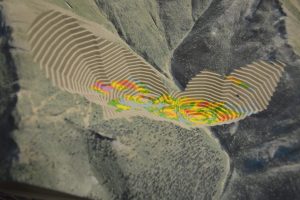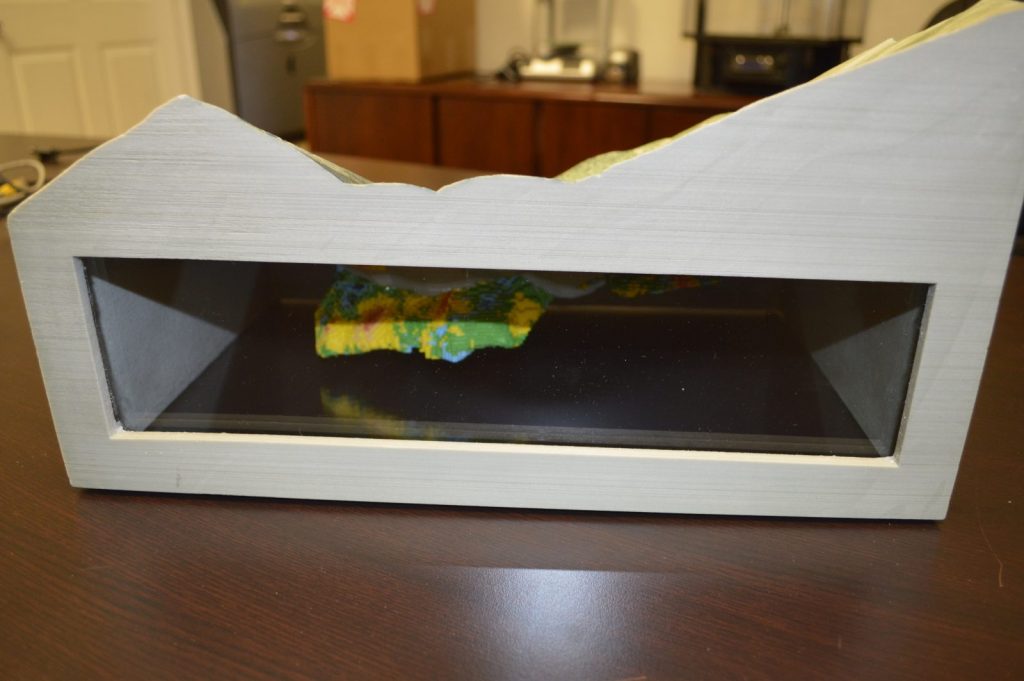We’ve heard about 3D printing for fashion, design and manufacturing applications – but what about 3D printing for mining applications?
3D printing technology, sometimes referred to as additive manufacturing, is now less expensive, more user-friendly and faster than previous generations. It’s an economical way of creating multipurpose models to effectively present technical information, particularly to non-technical audiences such as regulatory committees, internal management teams and investors.

In mining, this emerging technology enables the creation of models specialized for cost, audience and purpose. The models can illustrate everything from topological and geological data, block models, mine designs, tailings and storage designs, and onsite facilities. This means that what was previously expressed by hard-copy maps or digital representations can now be expressed with physical models, enabling more visual and tactile decision-making.
Compared to paper maps, physical models, foam board models and computer-designed models, 3D printed models match up fairly well. Models are initially created in GEOVIA Surpac, for example, and then sent to 3D printing specialists for actual printing.
In fact, the triangulated surfaces of DTM and 3DM objects are ideal candidates for 3D printing. With the additional solids functionality and increased compatibility with standard 3D printing file formats (OBJ files, for instance), Surpac’s usefulness in this emerging technology will only improve.
There are many types of 3D printing technologies, but the three primary methods used in mining and geology applications are:
- Extrusion printing: This is the most affordable but less precise option. It takes raw plastic filament, runs it through a hot end nozzle and lays it down in beads to build up a 3D model. These models are relatively inexpensive and also some of the most durable.
- Powder bed and inkjet head printing: This creates models from digital and orthophotographic data, repeatedly laying down layers of powder infused with ink and binder. This is more precise than extrusion printing but can be costly and the models can be quite fragile.
- Continuous Liquid Interface Production: At the high-end of the cost spectrum, this method applies a laser or UV light to a liquid or resin to shape and bind printing materials. Although expensive, this method can even add transparency to the model and bind multiple materials together.
3D Printing for Quarry Mining
3D printing experts, Cypress 3D Printing, were approached by a crushed stone company in Virginia, USA seeking to present future quarry planning information to regulatory and permitting committees. They also sought a medium with community education capabilities, as their pits were going to be filled with lakes after mine closure. They required a model showing the original pit design and removable pieces that would show the lake pieces after mining was completed. The resulting model conveyed the needed information to a non-technical audience, but the only drawback was expense.

3D prints pertaining to short-term planning may be cost prohibitive, especially if you have to reprint every year, but if you’re running a 30-year business or long-term planning, it makes a lot more sense. The client’s video describing the process can be found here.
Below are some other examples of 3D printed mines:


Other benefits of 3D printing
- Can convey volumetric changes at cut and fill operations, for example where a mining company is going to cut into the pit and the sequencing for each new operation location
- Provide context and strategy to operating teams at operating mines
- 3D printing can also create actual production parts (for mining equipment) or models of production parts (out of adhesive papers or sand castings for example)
When thinking about 3D printing for mining, the key takeaway here is you need to consider its purpose, your budget and the audience (who will use or view this model).
For more information on 3D printing, check out our sister blog 3D Perspectives or the Cypress 3D Printing website.
Dassault Systèmes will also be launching a 3D Printing experience shortly – watch this space!

